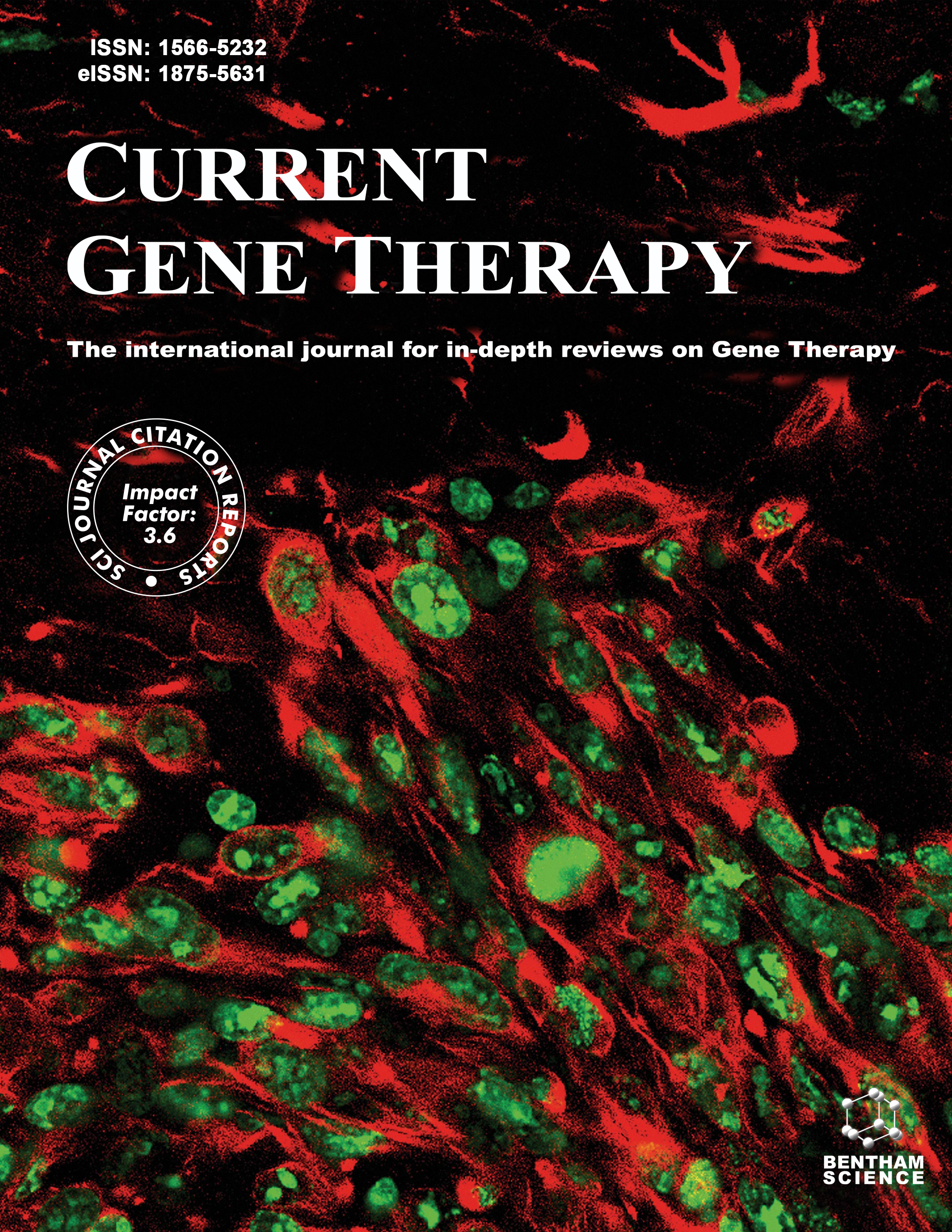-
oa Editorial Hot Topic: Engineered Nucleases for Targeted Genome Modification (Guest Editors: Jean-Paul Concordet & Carine Giovannangeli)]
- Source: Current Gene Therapy, Volume 11, Issue 1, Feb 2011, p. 1 - 1
-
- 01 Feb 2011
- Previous Article
- Table of Contents
- Next Article
Abstract
This special issue is devoted to artificial nucleases engineered for targeted genome modification. The discovery of restriction enzymes in the late 60s paved the way for enzymatic manipulation of DNA in the test tube. The novel reagents reviewed in this special issue now promise to usher us into a new era of DNA modification performed directly in living cells. Artificial nucleases are designed to introduce a targeted cut in genomic DNA and allow highly efficient sequence modification in living cells. The most prominent so far are zinc finger nucleases (ZFNs) and they are abundantly discussed in this issue. Other types of nucleases are also becoming available and they are specifically described in two reviews. Many important applications are mentioned and it is becoming clear that engineered nucleases are likely to of benefit to many fields of life sciences, from genetic studies in model organisms to gene therapy in humans. Dana Carroll gives us a highly enjoyable personal perspective on the development of ZFNs and their applications for targeted genome modification. His early vision of the importance of assembling novel nucleases by fusing the endonuclease domain of FokI to artificial zinc fingers led him and his collaborators to perform pioneering studies of targeted genome modification in model organisms. The recent generation of rat, zebrafish, maize and tobacco ZFN-mediated mutants testifies to the influence of their work and the list will continue to expand. Recent studies of Dana Carroll and others also exemplify the importance of better understanding the basic mechanisms of DNA recombination and repair at work when modifying the genome with nucleases. Frederic Paques and collaborators review the development of another family of artificial nucleases, the so-called meganucleases. They are derived from unusual endonucleases with very long target sequences and recent studies demonstrate their efficiency in several important model systems. The paper by George Silva et al also provides a very stimulating account of the state of the art in the emerging field of targeted genome modification and its applications to gene therapy, including the emergence of the novel family of TALE-nucleases. The paper from Toni Cathomen's lab reviews recent advances in ZFN design and use that have improved targeted genome modification activity. Importantly, it also discusses current limitations and key questions that remain to be addressed, especially in the context of therapeutic applications. One major concern is sequence specificity and the development of appropriate strategies to evaluate, predict and improve it. The review of Makoto Komiyama and collaborators describes another class of artificial nucleases that are chemical-based rather than protein-based like ZFNs. They are composed of a DNA recognizing moiety and of a cleaving agent. It focuses on the so-called ARCUT nucleases that make use of two pseudo-complementary PNAs to invade the DNA duplex and of a Ce(IV)/EDTA complex to hydrolyze it near the PNA binding site. Such a strategy is much less validated than the protein-based ones but available results are encouraging. In addition it presents the advantage of easy design and production since DNA target recognition is determined by base pairing. All together these reviews present a great overview of recent developments and applications in the field of artificial nucleases. These sequence-specific cleaving agents allow manipulating the genome sequence with extreme precision and are already considered as novel powerful tools for biological research and biotechnological applications. Therapeutic applications still require additional improvements and validations but are on the way and a Phase 1 clinical trial with an anti-CCR5 ZFN in an adenoviral vector started in 2009 as a novel anti-HIV strategy. Finally we can speculate that important progress will be made to accelerate the design and production of artificial nucleases with the desired sequence specificity.


